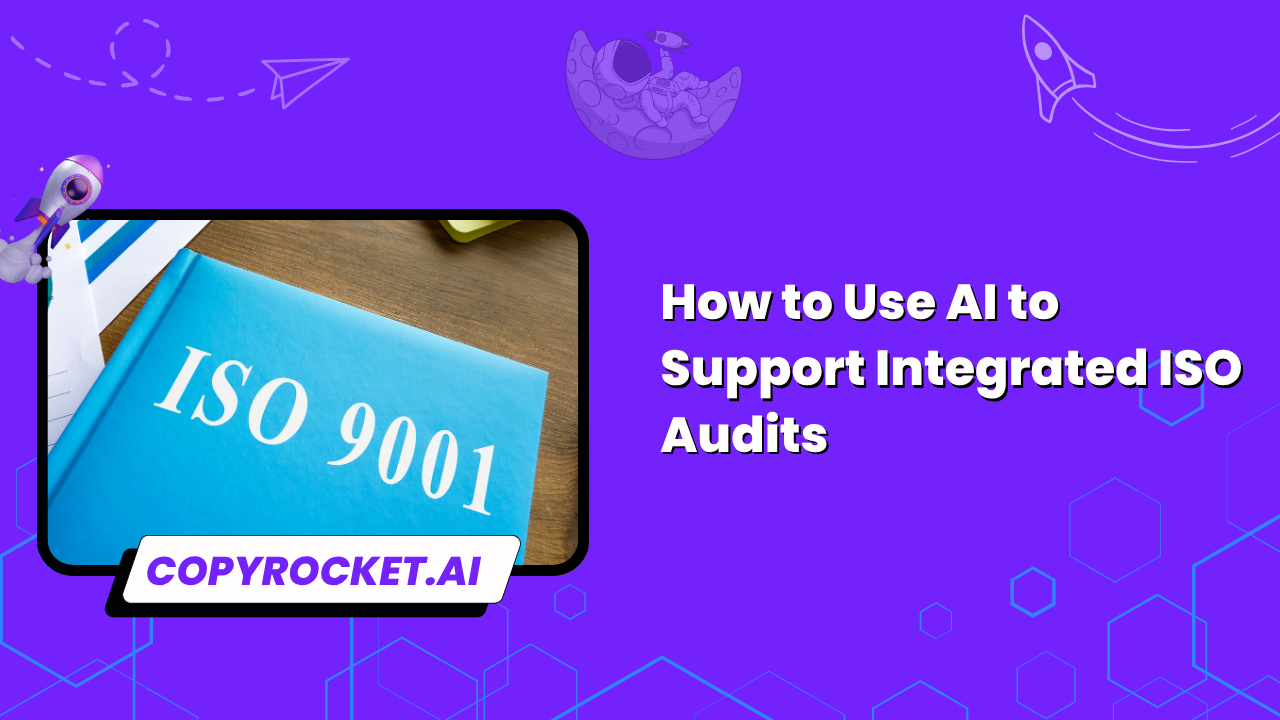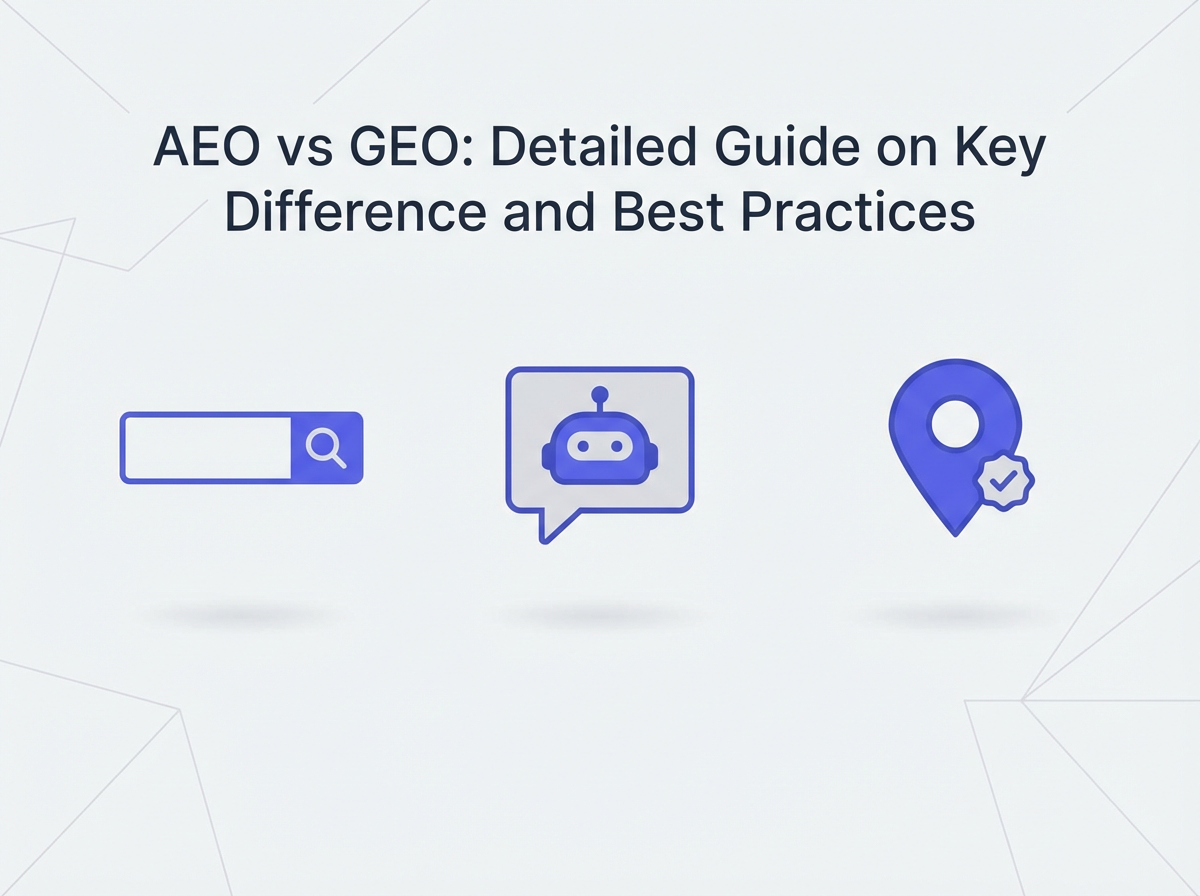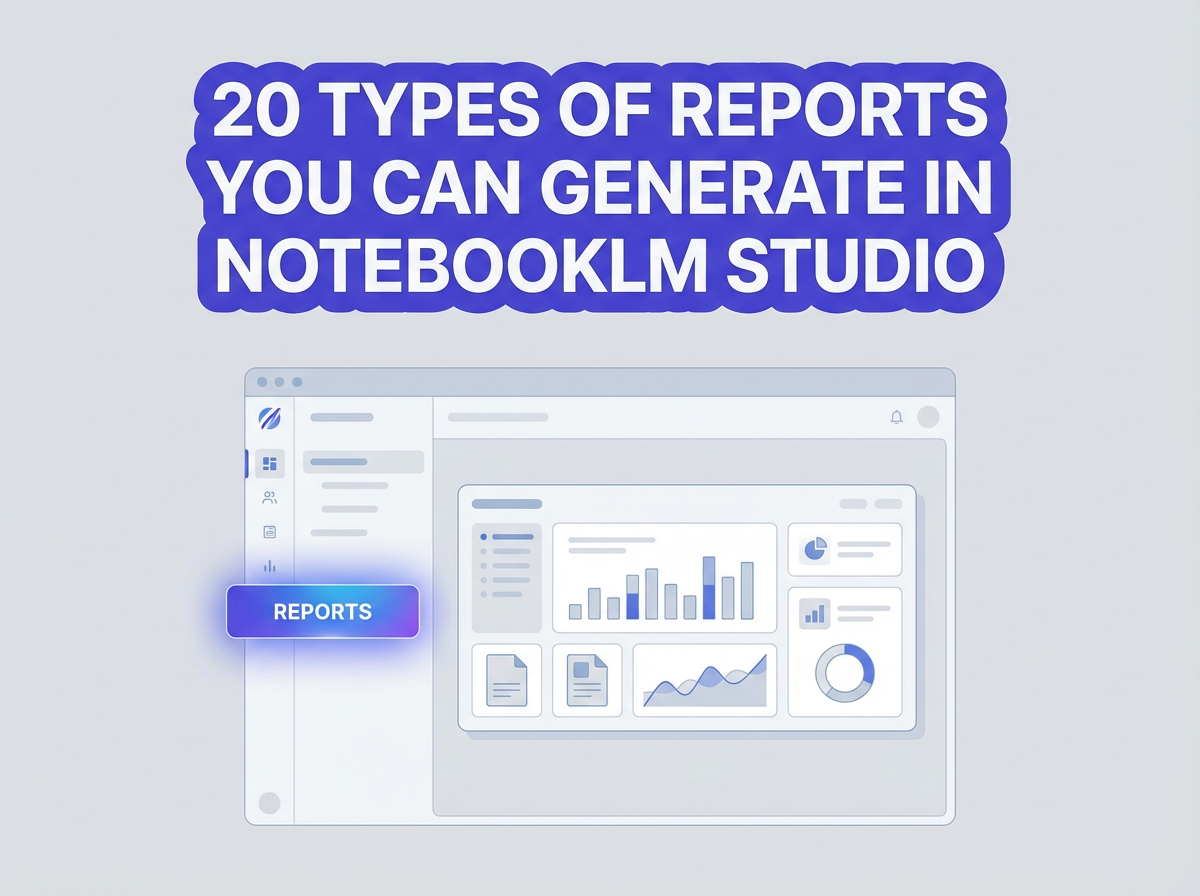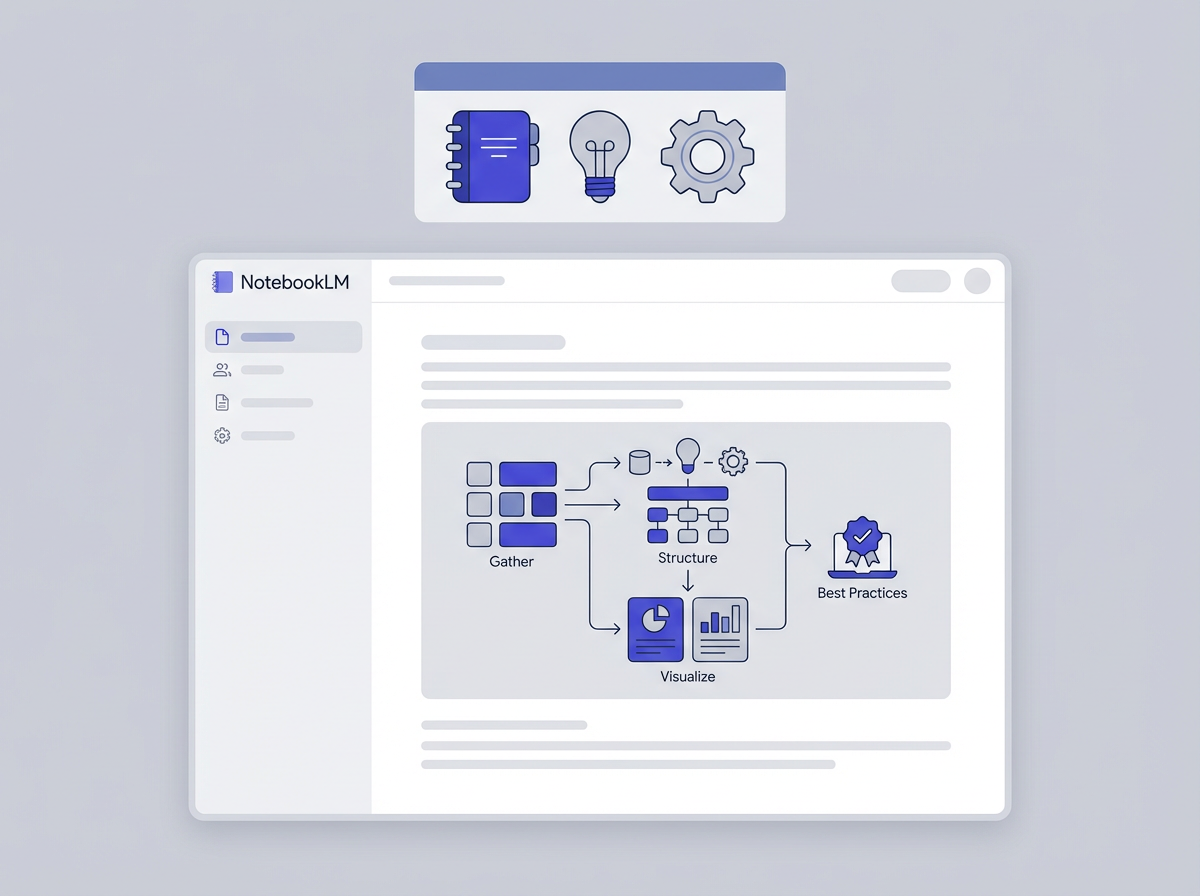ISO audits are essential for organizations to maintain compliance and demonstrate their commitment to quality, safety, security, and environmental standards.
However, these audits can be time-consuming and resource-intensive, especially when dealing with multiple ISO standards. Enter Artificial Intelligence (AI), a powerful tool revolutionizing how integrated ISO audits are conducted.
By automating repetitive tasks, streamlining data analysis, and ensuring more accurate results, AI is helping businesses save time, reduce costs, and enhance audit precision.
This blog explores how AI is reshaping integrated ISO audits, offering insights into its benefits and practical guidance to implement AI effectively.
Key Takeaways
- AI automates evidence collection, risk scoring, and clause mapping, reducing the time required for audits.
- Integrated audits covering multiple standards like ISO 9001, ISO 14001, and ISO 27001 benefit significantly from AI’s ability to identify overlaps and streamline processes.
- AI enables continuous assurance by monitoring systems in real time, reducing compliance risks and improving audit outcomes.
- Tools like AuditBoard and Drata offer readymade AI-driven features to simplify ISO audit workflows.
- Successful AI adoption requires clear governance frameworks, robust data practices, and auditor upskilling to maintain regulatory compliance and trust.
Why AI and Integrated Audits Fit Naturally
Integrated ISO audits consolidate the assessment of multiple ISO standards, such as ISO 9001 (Quality Management) and ISO 27001 (Information Security), into a unified process. This creates natural efficiencies, but it can also be overwhelming due to the volume of information and overlapping requirements.
AI is well-suited to enhance these audits by:
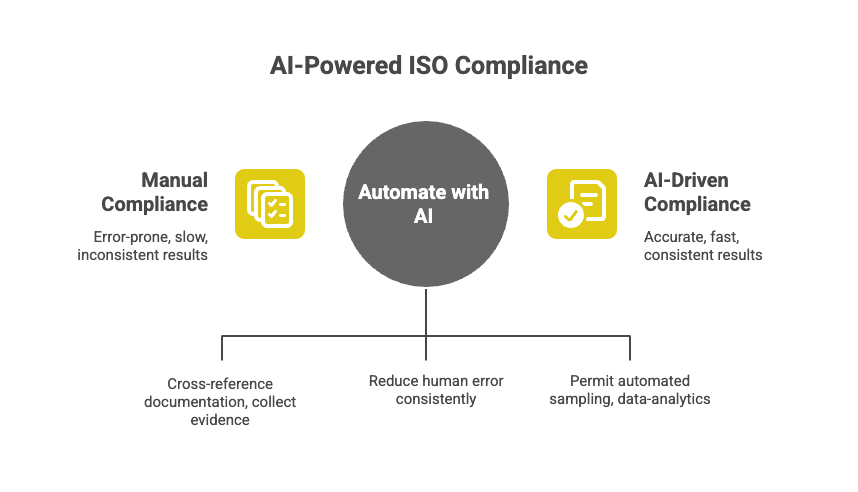
- Automating Compliance Tasks: AI-powered tools can cross-reference documentation, collect evidence, and label artifacts according to relevant ISO clauses.
- Improving Accuracy: AI reduces human error, producing consistent results across complex datasets.
- Supporting Audit Guidelines: Standards like ISO 19011 already permit automated sampling and data-analytics methods, while ISO 42001 outlines ethical AI governance.
By integrating AI, organizations create a more efficient and reliable framework for ISO compliance.
Related Resource: How to Use AI in Your ISO Management System
How AI Adds Value Across the Audit Lifecycle
AI impacts every stage of the audit process, making it faster, smoother, and more reliable. Here's a breakdown:
Planning and Scoping

AI evaluates organizational data in real time to score risks and recommend audit priorities. It aligns audit scopes across overlapping ISO requirements, ensuring maximum efficiency with minimal manual intervention.
Fieldwork
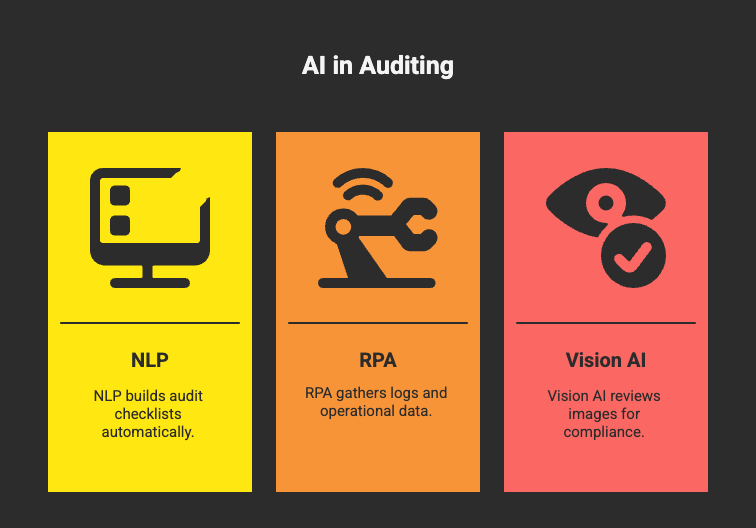
AI simplifies the collection and evaluation of evidence.
For example:
- Natural Language Processing (NLP) builds audit checklists automatically.
- Robotic Process Automation (RPA) gathers logs and operational data.
- Vision AI reviews images for compliance, such as verifying personal protective equipment (PPE) usage under ISO 45001.
These technologies reduce site visits and improve data richness.
Evaluation
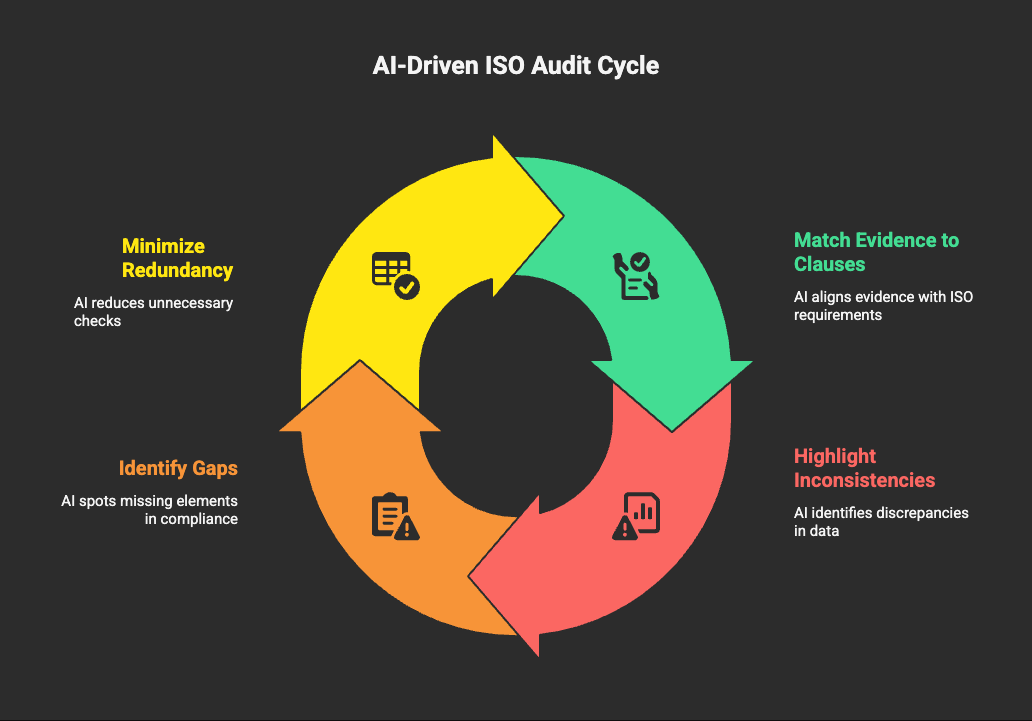
Using AI, evidence is matched to ISO clause requirements in seconds. Machine learning algorithms highlight inconsistencies, identify gaps, and minimize redundant checks.
Reporting
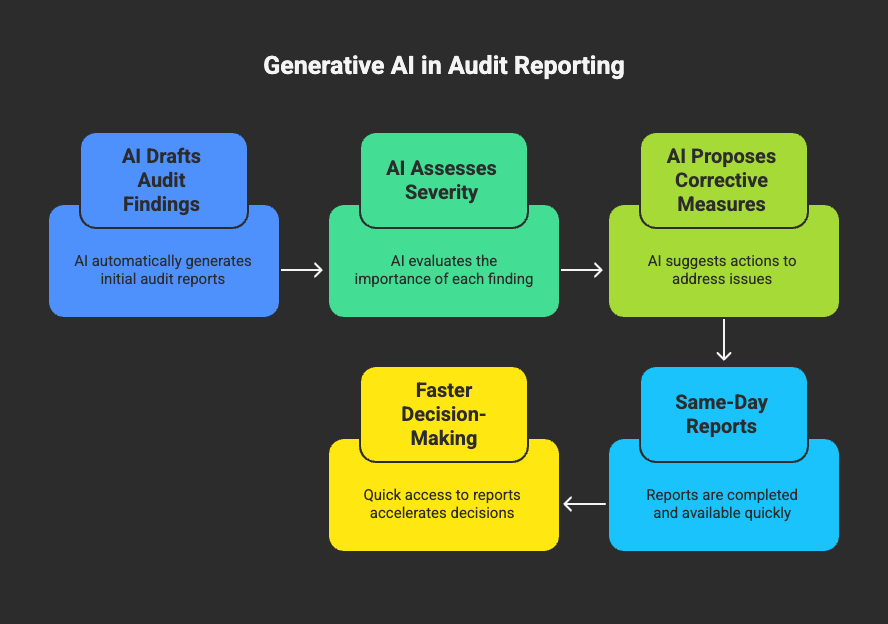
Generative AI streamlines reporting by drafting audit findings, grading their severity, and suggesting corrective actions. Same-day reports are possible, accelerating decision-making.
Follow-up and Continuous Improvement
AI continuously monitors key metrics to ensure ongoing compliance. Alerts help organizations address non-conformities promptly, reducing the scope of future audits.
Related Resource: AI and IQA Series: Automating ISO Audit Reporting
Leading AI-Enabled Audit Platforms
Several platforms leverage AI to improve ISO audits. Here are three standout tools:
- AuditBoard: Offers features like generative report writing and control mapping. Integrates seamlessly with governance, risk, and compliance (GRC) platforms.
Learn more: AuditBoard's ISO Features
- Drata: Specializes in continuous evidence collection and has 180+ pre-built connectors for ISO 27001, SOC 2, and GDPR compliance.
- IBM Watsonx Compliance: Uses advanced AI reasoning and provides explainability dashboards, making it a great option for ISO 27001 and environmental, social, and governance (ESG) audits.
Implementation Roadmap
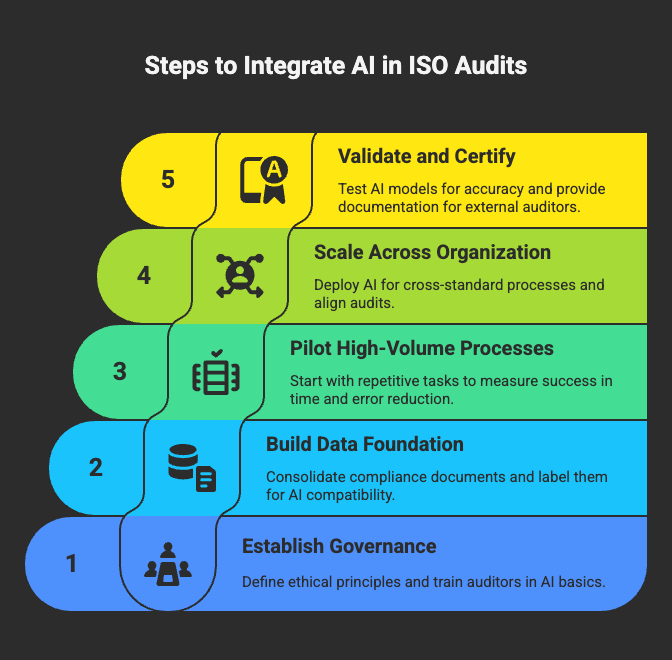
Adopting AI for integrated ISO audits is a multi-step process. Here's a simple guide:
Establish Governance Frameworks
- Define ethical principles for AI use, including transparency and accountability.
- Ensure auditors are trained in AI basics and ISO 42001 lifecycle controls.
Build a Data Foundation
- Consolidate all compliance documents into a centralized repository.
- Label artifacts to key ISO clauses for machine learning compatibility.
Pilot High-Volume Processes
- Start with repetitive tasks like supplier evaluations under ISO 9001.
- Measure success in terms of reduced errors and time savings.
Scale Across the Organization
- Deploy AI for cross-standard processes.
- Align audits to cover overlapping ISO clauses in one go.
Validate and Certify
- Test AI models for accuracy, explainability, and bias.
- Provide external auditors clear documentation on AI outputs.
Related Resource: Implementing ISO 9001 Using AI
Challenges and Mitigations

Even with its benefits, AI implementation comes with challenges. Here's how to address them:
- Data Quality: Reduce errors by validating data before AI ingestion.
- Algorithm Bias: Conduct bias audits as per ISO 42001 standards and use explainable AI dashboards.
- Skills Gap: Train auditors in analytics and AI governance to maintain compliance and trust.
- Regulatory Scrutiny: Keep complete records of AI outputs and adhere to ISO 42001 requirements.
Related Topic: Addressing Algorithm Bias in ISO Audits
Frequently Asked Questions (FAQs)
Can AI replace ISO auditors?
No. AI supports auditors by automating repetitive tasks and providing actionable insights. Human oversight ensures objectivity and trust.
What is ISO 42001?
It is the standard for AI management systems, outlining governance principles for using AI responsibly in industries, including audits.
Is AI cost-effective for ISO audits?
Yes. AI reduces manual effort and error rates while improving audit speed and quality, leading to long-term cost savings.
Final Thoughts
AI is transforming integrated ISO audits by making them faster, more accurate, and better aligned with compliance requirements. While challenges exist, with the right governance frameworks and tools, organizations can unlock AI's full potential. The future of ISO audits is digital, and adopting AI now positions businesses for sustained compliance and continuous assurance.
By integrating AI into ISO audits, organizations not only enhance operational efficiency but also reinforce their commitment to maintaining global standards. It’s time to make auditing smarter, safer, and stronger.


